Text
Is it just me, or do other aspiring authors/wannabe writers enjoy listening to book tube type channels as interesting/entertaining background noise, only to feel mildly anxious whenever the hosts start talking at length about how authors aren’t welcome in their review space and that authors need to respect their boundaries, even though being completely unpublished technically disqualifies one from being an ‘author’?
#aspiring writer#possibly anxiety#possibly social anxiety#i’ve had several channels i was interested in listening to#but then they start reiterating three or four times that authors aren’t welcome#and I can’t take it#stuffs breadsticks into purse#I’m sorry i have to leave now#time to block you so I don’t accidentally watch your content again#sorry
2 notes
·
View notes
Text
Archery information for writers that no one asked for but probably some of you need and I like talking about archery, so here it is.
when you put an arrow on the string, the verb is called “nocking” i.e. eyes glued on the target, he nocked the arrow
also the part of the arrow that gets put onto the string is called the nock. depending on the type of arrow this can be a piece of plastic glued into the arrow, or with wood or bamboo arrows it can be carved into the shaft of the arrow itself
you do not close an eye when aiming or shooting; you see better with both eyes open.
everyone has a dominant eye that more naturally your brain focuses with. that determines whether you are right or left handed when shooting, and doesn’t necessarily correlate to whether the person is right or left handed in anything else
so if you’re writing a character who has difficulty seeing out of one eye, take that into account when they are shooting
if they are right eye dominant, they hold the bow with their left hand and draw the string with their right. if they are left eye dominant, they hold the bow with their right hand and draw the string with their left
if they shoot left, the quiver sits on their left side/hip/thigh. shoot right - right side quiver.
there are several different ways to draw, if you are writing something historical or in a specific region, then do research on that style of archery. but for a generic place to start that is a more universal way of drawing a bow, here are some things to include
the chin stays down. raising your chin will fuck up your aim
the pointer finger on your draw hand rests on the side of your chin/jaw, and the string of the bow will touch the tip of the archer’s nose
weight is on the balls of your feet, leaning slightly forward off your heels
if it is an older bow/barebow, there is not usually a place for the arrow to rest on the bow. this means the arrow rests on the archer’s hand. if they are not wearing a glove on that hand, the fletchings (that’s the feathers on the arrow) will more than likely slice their hand when firing. this scars.
so if you’re wanting to describe someone observing and archer’s hands (hands are hot, don’t @ me) they would see a silver scar about halfway between the pointer finger knuckle and palm of the person’s hand. (turn your hand vertical and trace down the length of your pointer toward your thumb and stop next to the knuckle. that spot there.)
most archers wear something to protect their fingers on the hand that draws the bow. even with that, they have callouses. without it, a lot of callouses, scars, and blisters.
most common draw uses three fingers on the string: pointer, middle, ring. the arrow sits between the pointer and middle. just like where the draw point is, this is not universal and do research if you’re doing something culturally important.
barebow means that the bow is bare of any instruments. no sight, no weights, etc. the most basic/traditional form of bow
a recurve bow is anything where the tips of the bow curve back around forward, away from the archer
a compound is what you think of as a modern hunting bow, and is recognisable by having wheels at the ends and three strings
arrows have three fletchings that form a triangle, the point faces the archer so that the flat of the arrow will pass the flat of the bow on release. the arrow sits on the side of the bow facing the archer
archers with a larger/raised chest will sometimes where a chest protect so that the string does not catch when firing (this is regardless of gender, i know several cis-men who need it as well)
string can also catch on the forearm that is holding the bow and creates bruises and welts if you don’t wear a protector. modern ones are small plastic and cover just the spot, with elastic holding it in place. traditional ones are leather and wrap all the way around, lacing up on the back of your arm like a corset.
there is literally so much more, but i feel like this is plenty to get you started, and as always, feel free to drop an ask in my box if you need something more!
35K notes
·
View notes
Text

Claude: It’s soft~
409 notes
·
View notes
Text
trying to get your story together like:

470K notes
·
View notes
Photo

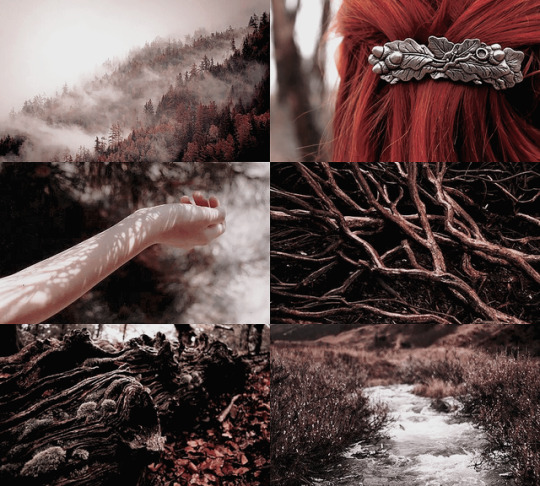
Tauriel - daughter of the forest
254 notes
·
View notes
Photo

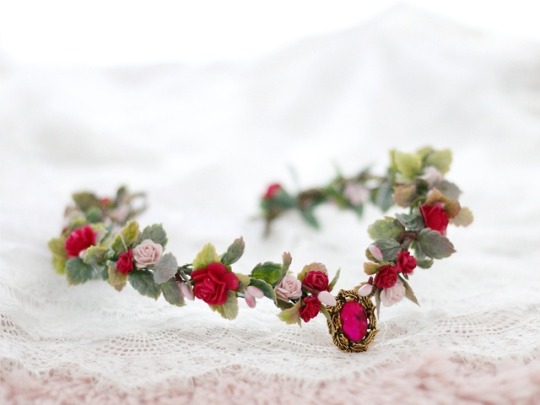

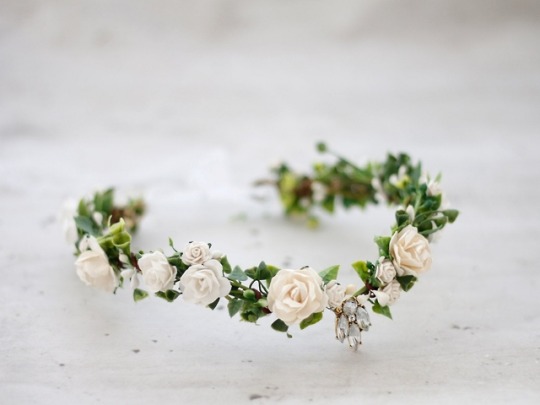

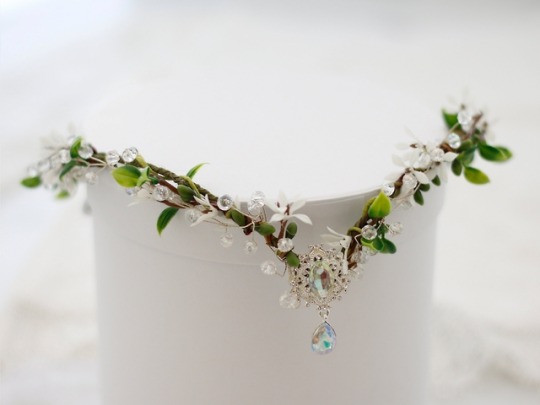


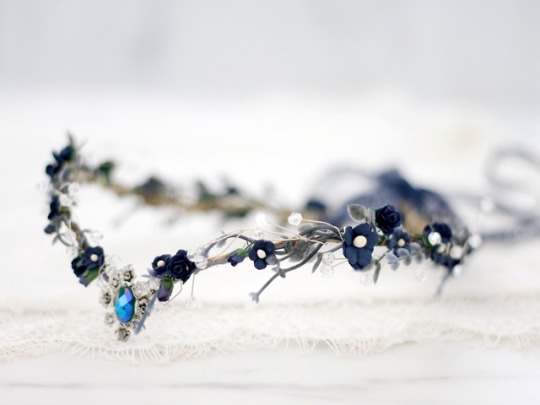
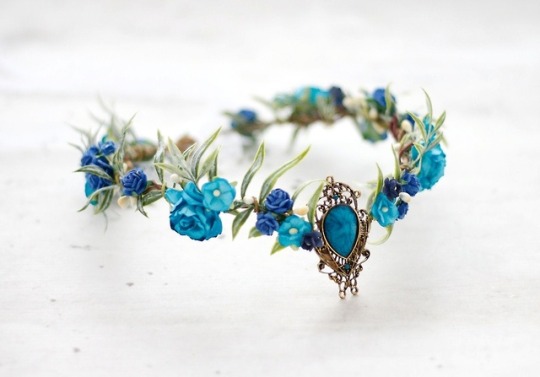
Elfin Tiaras
Lola White on Etsy
See our #Etsy or #Crowns tags
10K notes
·
View notes
Photo

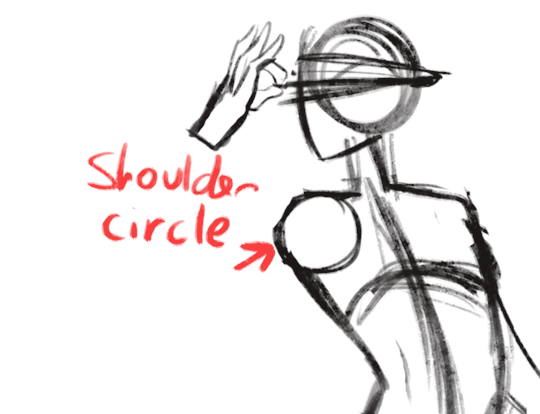
how to draw arms ? ?
912K notes
·
View notes
Text
Faerie List
Alvens: These are Water faeries who float around on bubbles and hate fish. During a full moon, they come on land to dance and play. They are not particularly friendly.
Amadan Dubh: This is a particularly dangerous type of faery that is greatly feared among the Gaels. They are known as the “fairy fools,” and the bringers of madness and oblivion. They play faery enchantments on their reed pipes on hilly slopes and precipices after sunset.
Banshee: The name “banshee” means a woman of the faery. It corresponds to the “Fear Sidhe” or faery man. The wild banshee wanders through the woods and over the moors at dusk, and some- times lures travelers to their death. Banshee can also travel at will to great distances. Appearing in tattered gray clothes, they are basically a sociable faeries who have become solitary through sadness and grief. They are the honor- able ancestral faery women of the old clans of Ireland, who are heard, but rarely seen. They wail a blood-curdling lament just before mis- fortune, illness, or death occurs in their ancestral families. Their wail can kill or instantly age mortals who hear it. Banshee also avenge the death of their descendants. They generally appear either as beautiful maidens or gruesome crones. Salt water and silver can harm them.
Bendith Y Mamau: They have the ill disposition and ugly appearance of goblins, but the glamour of the faeries. Living in underground caverns, they don’t care very much for mortals and they have been know to steal cattle and children, to kill farm animals, and to break important tools.
Billy Blin: A household familiar who is popularized in English and Scottish songs.
Boggart: They are known for breaking things and making trouble, but seldom do serious harm. Most old homes have a boggart. The supernatural boggart is sly, annoying, mischievous, and a prankster. They pull the covers from sleeping mortals, rap or pound on the door at odd times, or rearrange the furniture at night when you are sleeping.
Brownie: They are from 1 to 2 ft. tall and are scattered throughout the highlands and lowlands of Scotland as well as the northern counties of England. They have brown, wizened faces and hair growing all over their body, so they don’t need to wear clothes (although sometimes they are seen wearing brown cloaks with hoods). As household faeries, they do unfinished jobs such as mowing, threshing, caring for the laying hens, and tending the sheep and cattle. They bring good luck to a family, providing that the family treats the brownie well. Brownies also love animals and will take care of the household pets. They adore gifts of food and drink such as milk and honey cakes, but abhor gifts and wages. Urisks are the Scottish version of brownies.
Buccas: Residing in Cornwall, they are magickal beings that inhabit mines. Also called tinmine demons, they are the wind goblins that foretell shipwrecks.
Bwca: This is a sort of Welsh version of a brownie, but a more particular one. They can be great help around the house, but if offended they can become harmful, throwing things around the house, spoiling the milk, and ruining the beer.
Callicantzaroi: Naked, they ride about on chickens. They live in troops and are zealous in their celebrations of Yule.
Clim: A mischievous goblin that resides in chimneys and peeks out at children, scolding them when they are bad.
Clurichaun: Residing in southwest Ireland, they are renowned drunkards who both guard and raid wine cellars. The Clurichaun sing in Gaelic and have beautiful, magickal voices.
Coomlaen: These “elven steeds” appear as tall, thin, white or silvery horses who live in the forest and are always in the company of elves. As shapeshifters, the coomlaen can take the shape of their de- sires, but must return to the shape of a horse once during each day for at least six hours. They are fiercely devoted to one rider at a time and the bond lasts for the lifetime of the rider. The two communicate telepathically. Because the Coomlaen defends its rider, in order to befriend a coomlaen you must first befriend its rider. Coomlaens adore gifts of apples and honeysuckle. Iron is harmful to the coomlaen.
Cooshie: Also known as the “elfin hound,” they live in the forest and appear as large, silver-furred wolves that move quickly with the grace of a large cat. The cooshie stay with their elfin masters, and have heightened senses, including knowing when there is any magickal, spiritual, or physical presence in their territory. Like elves and coomlaens, they have an aversion to iron. Cooshies can heal sick or injured travelers and calm troubled minds and hearts.
Corrigans: From Brittany and Cornwall, they live in the woods, near streams. Corrigans are winged faeries who like to play pranks, such as taking human babies and replacing them with changelings.
Daoine Sidhe: The immortal polytheistic group of goddesses and gods of Pagan Ireland who merged with the land, these are the cream of the crop of faeries that form a faery nation. They appear in human form, dressed in green, and are called the peaceful faeries. They preside over the faery kingdom, play sweet music, dance, ride milk-white faery horses, and are generally accompanied by their faery hounds.
Dryad: They are happy, friendly, and playful wood nymphs who live in and take care of the trees. They are born of the same seed as the place they live. Dryads are the color of tree bark or leaves and their dark green hair is extremely long and flows about them. They can disappear by stepping into a tree, as if stepping into a dimensional door. Sometimes their skin is dappled like a tree trunk. Dryads are usually very charm- ing, sing beautifully, and particularly like willow and oak trees. Damaging a dryad’s tree harms the dryad as well, but the dryad can defend its tree by creating storms and lightning.
Dwarfs: Both male and female, dwarfs are usually from 3 to 5 ft. tall, with broad shoulders, large muscles, long arms, stumpy legs, and lots of facial hair. They are quick tempered, loyal, and immune to physical damage. Working with Earth, Fire, and stone, they are found underground under moun- tains and hills where they mine metals and gems, especially copper. Their craftsmanship is unmatched in the mortal world. They adore gifts of both precious metals and gems.
Eash Uisge: They are the Highland water horses known for being fierce and dangerous. They have the ability to shift into the shape of young, hand- some men.
Elves: According to Norse mythology, elves and dwarves are created in the time before humans from the body of Ymir, the giant. Inhabiting one of the upper worlds, and often found in Natural settings such as woodlands and forests, elves are somewhere between mortal and divine. Originally between 5 and 7 ft. tall, they were thin, strong, flexible, and quick. Their hair was usually red, blond, or light brown, and they had cat-like ears. Their cat-like eyes are green, blue, silver, or gold with slitted pupils. Through time, the elves became Elemental spirits of the land, sea, and forest, who are sometimes por- trayed as small, good-natured creatures with brown skin and delicate features. Iron does not kill elves, but it can injure them. They adore gifts of quartz crystal, pearl, moonstone, and silver. In the Western world, Santa Claus and his helpers are elves.
Ferrishyn: The Manx name for the faeries, also known as the “sleigh beggey.”
Fir Dearg: Also known as the “fear darrig” or the “red men,” they are a mischievous, rare breed of faery, who dress in red and have red hair. Their only interest seems to revolve around playing practical jokes on humans.
Ganconer (Gean-canogh): Also known as a love faery, the ganconer is a leprechaun-type faery who appears as an incredibly handsome young male. Called the “lover-talker,” he spends most of his time seducing milkmaids and shepherdesses. Appearing in lonely valleys and fields, they are known for playing beautiful songs on their pipes, but their fate is ultimately to be alone.
Gnomes: They are elderly dwarf people who stand from 1 to 2 ft. tall, and like dwarfs, live under- ground except for the few times when they come up to roam in the deep forest. Male gnomes grow long beards. Gnomes live under old oak trees in heavily forested areas, and like gifts of beautiful stones.
Gray Elves: Not choosing to associate with any other magickal beings, they live in isolated meadow- land. Gray elves have either silver hair and amber eyes, or pale, golden hair and violet eyes. They are very intelligent and extremely rare.
Gwartheg Y Llyn: The Welsh name for faery cattle, said to be usually milk-white in color. A farmer who gained the favor of this magickal cow was said to be richly rewarded, but the farmer who tried to lift a hand to hurt the animal would find misfortune would come to the farmer.
Gwradedd Annwn: The Welsh name for the “lake maidens,” they are beautiful and desirable, but are not like sirens and nixies. They are known for marry- ing mortals much like the Silkee or “seal maidens.”
Hobgoblins: They are the English cousins to the Scottish brownie and Welsh bwca. A house faery, a hobgoblin’s favorite place is behind the kitchen fire, once known as a “hob.” Once settled, they rarely leave the house, and when feeling ne- glected, they are known to hide keys in the most unlikely places. They are vulnerable to iron and gold. In folklore and literature, both Robin Goodfellow and Puck are hobgoblins.
Knockers: In Cornwall, they are generally helpful mine sprites that are particularly attracted to rich veins of ore. Miners of old were said to follow the sound of the knockers’ tools pounding the rocks to find a strike. Knockers are also known to warn against cave-ins and floods, and as such, the miners always leave them gifts of food and drink. In Wales, knockers are known as “coblynau.”
Kobold: The German name for the “little people,” originally they were tree sprites who were captured and brought home in wooden boxes. The per- son who captured the kobold could open up the box and the kobold would do things for her or him. But if anyone else opened the box, the kobold would take revenge for being confined. They formed the basis for the original jack-in- the-box for children. They are old men the size of small children who wear pointed hoods or caps and green clothing. Loud noises and strong winds scare them. For gifts of food and milk left out at night, they will do any little job around the house and barn, such as washing the dishes, preparing meals, sweeping the floor, making the fire, or tending the farm animals. Kobolds also have the ability to cast binding spells and will go to great efforts to protect the members of the household. If mistreated, they can become truly nasty.
Leanhaun (Leanan) Sidhe: They are the faery mistresses or sweethearts of Scotland and Ireland. They crave love, and try to gain power over their lovers, treating them like slaves and draining all the life out of them before moving on to new lovers. Said to be an inspiration to poets and musicians, these magickal faeries act as sort of muses, giving the artist’s work an otherworldly quality.
Leprechauns: They usually manage to trick their way out of surrendering their gold. Only a select few get away with a leprechaun’s riches. Solitary faeries of Ireland, witty, fascinated with gold, they can pass by as a swirl of dust, knocking off your hat. They are generally 2 to 3 ft. tall, with wizened faces, bright eyes, and red noses. They dress mainly in greens and browns, and are known for their excellent shoe-making skills.
Lorilei: A solitary faery, who is beautiful and bewitching, she is known for lounging on rocky heights while singing a song of enchantment.
Lunantishee: They guard the blackthorn bushes particularly on Samhain and Beltane. If you cut a stick from the bush on either one of those days, you will suffer misfortune.
Mermaids/Merrows: They live in the airy palaces be- neath the waves. They wear red-feathered caps to swim from their underwater world to ours. If a mortal steals the cap, the merrow can’t get back home. The females are beautiful, the males are ugly with green faces and red pig noses. Both have fish tails and webbed fingers. Taking mortal lovers, their offspring are covered with scales.
Muryans: Cornish faeries, the word “muryan” means “ant.” These are faeries the size of ants, who are shapeshifters. Every time they shift shape, they get smaller, eventually getting so small, they disappear from sight.
Nixie: They are Water sprites that inhabit lakes and seldom venture onto land. Their houses are made from seaweed and are guarded by giant fish. They are known for charm spells that convince humans to do their bidding.
Nymphs: Nature spirits who evolved into faeries, they live in clear lakes, streams, and crystalline caverns. Intelligent and beautiful, they do not like intrusion, but will be friendly if approached by a good-hearted mortal. Nymphs have the power of prophecy and take mortal lovers. They are also said to be extremely hard to avoid once they have taken an interest in you, and can occasionally be dangerous if they become obsessed with you. Often traveling in pairs, nymphs are mobile, but they can also permanently align themselves with trees, rock outcroppings, mountains, rivers, and springs. They appear as young, extremely gorgeous women, who are frequently dancers, artists, and musicians. They are amorous and have insatiable sexual appetites. According to folklore, a nymph’s lifetime was the same as that of the phoenix, who outlived nine ravens, who out- lived three stags, who outlived four crows, who outlived nine generations of aged mortals.
Oakman: A wood faery who lives in oak trees, the oakman is a guardian of the animals. The familiar saying “faery folks are in old oaks” speaks of their kind. The oak is considered the tree of the dead and the abode of departed spirits. Oakmen resemble drawfs with red noses, wear red toadstool caps, and have an affinity with bluebells.
Pechs (Pehts): The name used for the faeries of the Scottish Lowland, Pechs are said to be like the feens of the Highlands and the trows of Shetland.
Phouka (Pooka): Originally deadly sea horses with glossy coats and metallic-like hooves, phoukas are now often viewed as wild, mischievous creatures who are related to the leprechaun. Phoukas can employ the shape of an animal in order to play wild pranks and kill mortals. In contrast, in some stories that are told about them, phoukas that are treated kindly are known as friendly beings that help farmers.
Piskies (Pixies, Pigsies): Found frequently in Cornwall, Devon, and Somerset, England, they stand 1 ft. high (or smaller), are slim, and wear green clothes and pointed red hats. They have blond hair and green eyes, pointed ears and chins, and turned- up noses. They can also levitate and move tiny objects from one place to another. Usually friendly, they can also be mischievous, and are known to steal horses and ride them around in circles, creating Faery Rings as they do.
Portunes: These are teeny tiny faeries that are about a finger’s length or less in size.
Redcaps: They live in castles and towers where evil deeds have been done so they can feed off the energy and create more of their own. They look like brownies, but wear caps made red by the blood of passing strangers at whom they have thrown stones.
Salamander: They are the powerful Spirit faeries of Fire because the salamander embodies the in- tuitive Element of Fire. Without the salamander, Fire would not exist. They come in all sizes and differ in appearance, but they are most often seen as being similar to a 1-ft. long lizard. They can grow larger or smaller at will. Sometimes they are seen as a ball of gold, orange, or red light. They are very devoted and quick to defend a friend. Working with the salamander helps you develop and strengthen your intuitive side.
Seelie: A good-hearted and benevolent group of faeries who glow as they ride the winds in search of humans needing help. The court of the kindly faery host is called the “Seelie Court.” “Seelie” means “blessed” in Gaelic. These benevolent faeries give gifts of bread and seed corn to the poor and pro- vide all kinds of help to their favorite mortals.
Sheoques: Appearing human-like, they live in ancient thorn bushes and faery forts that are surrounded by ditches. Also known for their bagpipe playing, they enchant and steal children, most times returning them unharmed and happy.
Shock: They appear as a horse, donkey, large dog, or calf. They are frightening and something to get away from if, by chance, you encounter one.
Sidhe: The word means “people of the faery mounds.” A distinction is often made between the “sidhe” who are seen walking on the ground after sunset, and the “Sluagh Sidhe,” the faery host who travel through the air at night and are known to abduct mortals. There are also guardian “sidhe” associated with the lakes of Ireland and Scotland. These distinct categories of “sidhe” beings tie in with the testimonies of seers who divide the “sidhe” into Wood spirits, Water spirits, and Air spirits, i.e., the Elemental spirits.
Sidhe Draoi: Gaelic for “faery druids,” folklore says that they took their name from the faery nymphs who taught them the magick of the trees. They are related to dryads.
Silkee: Usually found in seas and oceans, silkee first appear as seals, but become beautiful women when they shed their skin. They use their seal- skin to move from their world to this world. If their skin is taken from them, they can no longer move back and forth.
Sithich: Active Highland sprites known for being mischievous and having weapons that do their bid- ding, they are dexterous, child abductors, and intrude on women during childbirth. Their weapons are made of stone, shaped like a barbed arrowhead, and thrown with great force like a dart.
Sirens: They are Greek sea nymphs. The sirens’ enchantingly beautiful song entices sailors, leading them to their death.
Skillywidden: Small, young faeries who cannot shift their shape or alter their size.
Sleigh Beggey: The Manx name for the faeries.
Slievegallion: Known as the “hosts,” they are the spirits of mortals who have passed on into the otherworld. They fly about in great clouds, up and down the landscape. On clear, frosty nights they can be seen, and heard, fighting their battles in the air. They sometimes put mortals
Slyphs: under their spells to help fight their battles. Living for a thousand years without seeming to age, they are beautiful, changeable crea- tures that parallel nymphs, only they exist in the Element of Air. Living on the tops of high places such as mountains and cliffs, slyphs vary in size, are winged, transparent, elusive, and surrounded by a glowing radiance. For a very brief time, they can take on human form. They move by floating about with the wind, and as such, are known as the Spirit faeries of the Air. They inspire mortals, especially those individuals involved in the creative arts.
Spriggans: They guard the treasures of other faeries. Spriggans are ugly and dour, standing stone sprites that are said to have come over from Brittany where they are known as “korreds.” Folklore suggests that they brought the origi- nal standing stones to Cornwall. They can be seen around old ruins, standing stones, bar- rows, giants’ quoits and castles, and places where treasure is buried. They bring blight to crops, whirlwinds over crop fields, and storms. Spriggans are the ghosts of old giants, who appear small but can become gigantic at will.
Sprites: Very shy, delicate, and reclusive, sprites are winged spirits that dwell in meadows and wood- land glens. There are many types of sprites, depending upon their Element. Fire sprites are very rare. As William Shakespeare describes them in The Tempest, “Sprites are spirits: they do not have bodies as fairies do.” They adore gifts of nuts, acorns, and sweet treats, and love to be flattered by mortals.
Trolls: Originally supernatural beings in Scandinavian folklore, later they became huge ogres with great strength and little wit. Trolls are known for guarding castles and treasure, hunting in packs in the deep forest, and being deadly to mortals. They can outrun any mortal. Fire and sunlight will harm them. Never try to befriend one.
Trows: They are the Shetland Island version of trolls. They live in caves near the ocean or in sandy hillsides. Thought to be somewhere between dwarfs and giants, trows are dimwitted, un- friendly, and ugly. Sunlight turns them to stone or makes them explode. The Scottish Highland name for trows is Feens or Fians.
Undines: As Elemental Water spirits usually found within forest pools, waterfalls, marshlands, rivers, lakes, and riding the ocean waves, the beautiful voices of the undines can sometimes drift above the sound of the water. They inhabit underwater caves, river banks, and lake shores. They are able to influence the flow of water in streams, rivers, lakes, and oceans, as well as the plants that grow in and under the water. Undines can appear human-like and are generally shy, but friendly. Peaceful, graceful, and attractive, their skin shimmers blue-green, green, or aqua like the water. The undines are ruled by love and adore gifts of sweet-smelling perfumes.
Unseelies: They are dark, malevolent faeries, who have excessive pride, are unkind, and have malicious ways. In contrast to the seelie court, the unseelie court is one of the malevolent faeries, who are hostile and harmful. Stay away from them and do not engage them in any way.
Water Sprites: They are closer to the traditional concept of a mermaid, and are the marine counterparts of leprechauns.
Wight: A supernatural being or creature that is very hardy. Every tree has a wight who is its guardian. An old Scottish verse says, “If you call me blessed wight, I’ll be your friend both day and night.”
21K notes
·
View notes
Text
I’ve seen a lot of curious people wanting to dive into classical music but don’t know where to start, so I have written out a list of pieces to listen to depending on mood. I’ve only put out a few, but please add more if you want to. hope this helps y’all out. :)
stereotypical delightful classical music:
battalia a 10 in d major (biber)
brandenburg concerto no. 5
brandenburg concerto no. 3
symphony no. 45 - “farewell” (haydn)
if you need to chill:
rondo alla turca
fur elise
anitra’s dance
in the steppes of central asia (borodin) (added by viola-ology)
if you need to sleep:
moonlight sonata
swan lake
corral nocturne
sleep (eric whitacre) (added by thelonecomposer)
if you need to wake up:
morning mood
summer (from the four seasons)
buckaroo holiday (if you’ve played this in orch you might end up screaming instead of waking up joyfully)
if you are feeling very proud:
pomp and circumstance
symphony no. 9 (beethoven; this is where ode to joy came from)
1812 overture
symphony no. 5, finale (tchaikovsky) (added by viola-ology)
american (dvořák)
if you feel really excited:
hoedown (copland)
bacchanale
spring (from the four seasons) (be careful, if you listen to this too much you’ll start hating it)
la gazza ladra
death and the maiden (schubert)
if you are angry and you want to take a baseball bat and start hitting a bush:
dance of the knights (from the romeo and juliet suite by prokofiev)
winter, mvt. 1 (from the four seasons)
symphony no. 10 mvt. 2 (shostakovich)
symphony no. 5 (beethoven)
totentanz (liszt)
quartet no. 8, mvt. 2 (shostakovich) (added by viola-ology)
young person’s guide to the orchestra, fugue (britten) (added by iwillsavemyworld)
symphony no. 5 mvt. 4 (shostakovich) (added by eternal-cadenza)
marche slave (tchaikovsky) (added by eternal-cadenza)
if you want to cry for a really long time:
fantasia based on russian themes (rimsky-korsakov)
adagio for strings (barber)
violin concerto in e minor (mendelssohn)
aase’s death
andante festivo
vocalise (rachmaninoff) (added by tropicalmunchakoopas)
if you want to feel like you’re on an adventure:
an american in paris (gershwin)
if you want chills:
danse macabre
russian easter overture
egmont overture (added by shayshay526)
if you want to study:
eine kleine nachtmusik
bolero (ravel)
serenade for strings (elgar)
scheherazade (rimsky-korsakov) (added by viola-ology)
pines of rome, mvt. 4 (resphigi) (added by viola-ology)
if you really want to dance:
capriccio espagnol (rimsky-korsakov)
blue danube
le cid (massenet) (added by viola-ology)
radetzky march
if you want to start bouncing in your chair:
hopak (mussorgsky)
les toreadors (from carmen suite no.1)
if you’re about to pass out and you need energy:
hungarian dance no. 1
hungarian dance no. 5
if you want to hear suspense within music:
firebird
in the hall of the mountain king
ride of the valkyries
night on bald mountain (mussorgsky) (added by viola-ology)
if you want a jazzy/classical feel:
rhapsody in blue
jazz suite no. 2 (shostakovich) (added by eternal-cadenza)
if you want to feel emotional with no explanation:
introduction and rondo capriccioso
unfinished symphony (schubert)
symphony no. 7, allegretto (beethoven) (added by viola-ology)
canon in d (pachelbel)
if you want to sit back and have a nice cup of tea:
st. paul’s suite
concerto for two violins (vivaldi)
l’arlésienne suite
concierto de aranjuez (added by tropicalmunchakoopas)
pieces that don’t really have a valid explanation:
symphony no. 40 (mozart)
cello suite no. 1 (bach)
polovtsian dances
enigma variations (elgar) (added by viola-ology)
perpetuum mobile
moto perpetuo (paganini)
pieces that just sound really cool:
scherzo tarantelle
dance of the goblins
caprice no. 24 (paganini)
new world symphony, allegro con fuoco (dvorak) (added by viola-ology)
le tombeau de couperin (added by tropicalmunchakoopas)
carnival of the animals (added by shadowraven45662)
if you feel like listening to concertos all day (I do not recommend doing that):
concerto for two violins (bach)
concerto for two violins (vivaldi)
violin concerto in a minor (vivaldi)
violin concerto (tchaikovsky) (added by iwillsavemyworld)
violin concerto in d minor (sibelius) (added by eternal-cadenza)
cello concerto in c (haydn)
piano concerto, mvt. 1 (pierne) (added by iwillsavemyworld)
harp concerto in E-flat major, mvt. 1 (added by iwillsavemyworld)
and if you really just hate classical music in general:
4′33″ (cage)
a lot of these pieces apply in multiple categories, but I sorted them by which I think they match the most. have fun exploring classical music!
also, thank you to viola-ology, iwillsavemyworld, shayshay526, eternal-cadenza, tropicalmunchakoopas, shadowraven45662, and thelonecomposer for adding on! if you would like to add on your own suggestions, please reblog and add on or message me so I can give you credit for the suggestion!
294K notes
·
View notes
Text
So I found this cool website for learning ancient languages
go wild
306K notes
·
View notes
Text
A Knight in shining armor is a man whose metal has never been tested.
34K notes
·
View notes
Photo
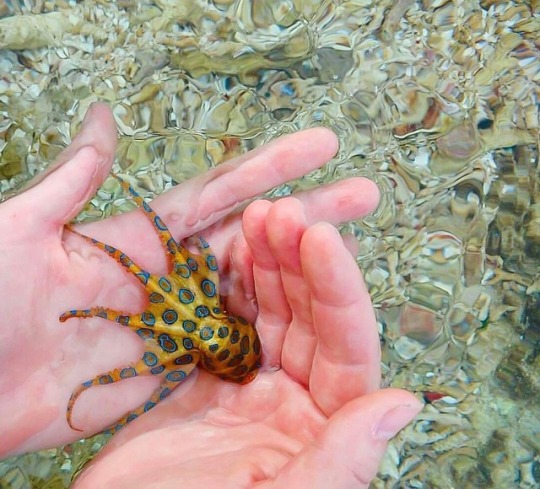
#reasons to never go in the ocean again#deadly sea creatures#snails#octopus#blue ring octopus#poison
219K notes
·
View notes
Note
Hi! I'm currently writing a series that's part mystery, part fantasy where none of the characters know what's really going on and I've been debating how much the audience should know, specifically there's this one character who everyone thinks is dead but isn't. I was wondering if you have any advice on narratives where the audience knows more than the characters and how to keep readers engaged and interested
There’s a thin line between suspense and mistery and intentional confusion and my advice is not to cross it. Try reading about Dramatic Irony, which is an instance where the audience (since is often used for theatrical plays and movies, but on its substance it can also be used on narrative works) knows more than the characters, or more than some characters. This also works in the suspense genre, where the public knows more than the characters and what can happen; on the contrary, mistery is when the characters know more than the public but it’s all revealed at the end, my second advice is read about suspense and not mistery, while keeping the fantasy part of your story.
Here’s a link for Dramatic Irony, also here’s a link for an article called When Characters Know More than the Audience, is directed to movies but you can extrapolate some things to writing.
Keeping your readers in the dark for too long in the story might make them stop reading, the same with confusing narratives, you can rely oh foreshadowing if you don’t want to reveal too much info. As for your dead character, who are they and why your readers should care about them? Give them a believable reason why they didn’t die in the first place and why no other character knows that they aren’t dead. And what’s more important, give your readers a reason to care about this dead character.
Links
Link 1: 9 Tricks to Writing Suspense FictionLink 2: 6 Secrets to Creating and Sustaining SuspenseLink 3: 7 Steps to Creating Suspense (there’s the image of a spider right at the beginning)Link 4: A Simple Way to Create Suspense Link 5: Back from the Dead (tv tropes)
Hope this can help.
Lia
160 notes
·
View notes
Photo

youtube Swordman standing up to gender roles
122K notes
·
View notes
Text
HELLO I JUST FOUND THE BEST FUCKING WEBSITE FOR WORKING ON CHARACTERS AND WORLD BUILDING YEET FUCKERS SEE YOU IN 8 YEARS
194K notes
·
View notes
Link
Excellent tips for managing infodump, by avoiding it.
347 notes
·
View notes
Link
Reblogging this for future reference
949 notes
·
View notes